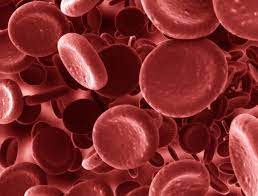Bacterial cord-like aggregates induce TB infections
About 80 years ago, it was found that Mycobacterium tuberculosis (MTB), a devastating lung disease, could create cords like snakes.
 In a publication that was published in the journal Cell, researchers explain the biophysical principles by which these cords develop, showing how several generations of dividing bacteria bind together to create these structures that allow antibiotic resistance.
In a publication that was published in the journal Cell, researchers explain the biophysical principles by which these cords develop, showing how several generations of dividing bacteria bind together to create these structures that allow antibiotic resistance.
The research was led by senior author Vivek Thacker (@DrVivekThacker), who is now based at the Department of Infectious Diseases at Heidelberg University in Germany. “Our work clearly showed that cord formation is important for infection and why this highly ordered architecture might be important for pathogenesis,” says Thacker.
In order to examine the function of MTB cord development, the research used a rare mix of technologies. One such tool was a lung-on-chip model, which provided a clear view of “first contact” between MTB and host cells at the air-liquid interface in the lungs. This demonstrated that early infection is characterized by cord development. The researchers confirmed that cording also happens early in infection in vivo by utilizing a mouse model that develops diseases that resemble those of human TB. This allowed them to get tissue for confocal imaging analysis.
The research produced a number of novel results on how these cords interact with and compress the cell nucleus, how this compression impacts the immune system and linkages between host cells and epithelial cells, and how cord development impacts the lung’s alveoli. The research also showed that these cords became more resistant to antibiotic treatment while maintaining their structural integrity.
According to Melanie Hannebelle (@MelanieHanneb), formerly of the Global Health Institute at EPFL and currently at Stanford University, “There is an increasing understanding that these mechanical forces influence cellular behavior and responses, but this aspect has been overlooked because traditional cell culture models do not recapitulate the mechanical environment of a tissue.” “Understanding how forces at the cellular and tissue level or crowding at the molecular level affects cell and tissue function is therefore important to develop a complete picture of how biosystems work.”
“By thinking of MTB in infection as aggregates and not single bacteria, we can imagine new interactions with host proteins for known effectors of MTB pathogenesis and a new paradigm in pathogenesis where forces from bacterial architectures affect host function,” Thacker explains.
Future studies will concentrate on figuring out if cord development gives known MTB pathogenesis effectors—many of which are found on the MTB cell wall—new activity. Additionally, it will examine how tightly packed the bacteria inside the clump affects them and how this could have a protective effect against antibiotics.
According to Richa Mishra, the second first author who is presently at EPFL’s Global Health Institute, “Antibiotic therapy is the mainstay of treatment for tuberculosis infections, but therapeutic regimens are long and complicated, with a rising threat of drug resistance.” The necessity for host-directed medicines or treatments that block certain virulence pathways to expedite and enhance antibiotic therapy is well known.







